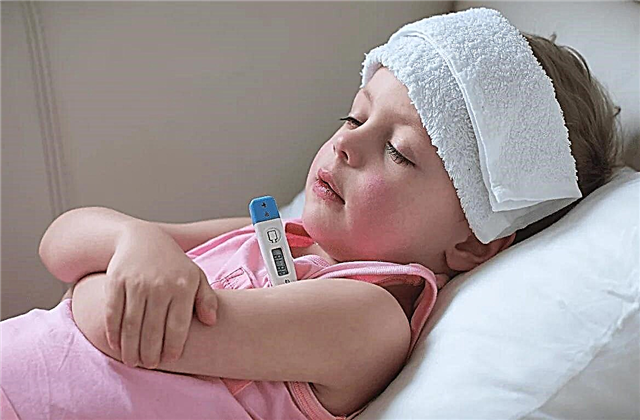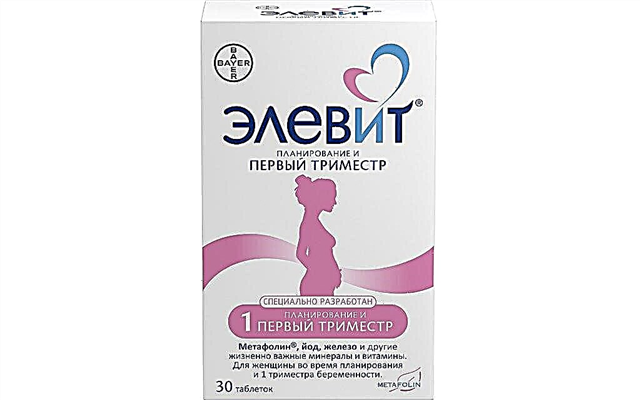Many people have information about bronchitis and bronchial asthma. But what is asthmatic bronchitis? How does it manifest itself? What are special? And the main question that worries parents is how to distinguish asthmatic bronchitis from the onset of bronchial asthma? It is very important to have an idea of this disease, since it is necessary to provide the child with medical care correctly and in a timely manner.
What is asthmatic bronchitis?
Asthmatic bronchitis in children is a disease that has a combined etiology, that is, an allergic reaction is layered on the infectious process. This disease affects the lower respiratory system, mainly large and medium bronchi.
Asthmatic bronchitis is more often recorded in children under 6 - 7 years old.
It should be emphasized that such children have a history of signs of atopy (predisposition to allergic reactions). Or, patients already have final diagnoses such as atopic dermatitis, allergic rhinitis, and others.
How is it different from simple bronchitis?
The main distinguishing feature of asthmatic bronchitis from a simple one is the pathogenesis of the disease itself (development mechanism). In simple bronchitis, after infection with bacteria or viruses, catarrhal inflammation of the bronchial mucosa occurs.
During treatment, during a cough, sputum easily leaves the affected elements of the respiratory system. At the same time, the bronchi of a patient who does not have an allergic predisposition do not have hyperreactive properties. That is, they are not sensitive to the effects of various stimuli.
Features of the structure of the respiratory tract in children, predisposing to the appearance of asthmatic bronchitis
There are some anatomical and physiological features of the structure of the respiratory tract in a child, which can somehow provoke the development of asthmatic bronchitis. Initially, bronchial hyperreactivity is observed in children with this disease.
The mucous membrane of the bronchi overreacts to dust, drugs, chemicals, pollen, bacteria, viruses. Also, some anatomical changes in the bronchi should be noted - they are narrow, their compliance and mobility are reduced.
Normally, the bronchial mucosa has nonspecific local protection against bacteria and viruses, which is carried out by mucociliary clearance. In children with asthmatic bronchitis, such protection is insufficiently developed. In addition to the anatomical changes directly related to the bronchi, children may have a functionally immature cough reflex, which also increases the chance of developing pathological processes in the diving tract.
What happens at the site of inflammation?
The mechanism of development of asthmatic bronchitis triggers bronchial hyperreactivity to the effects of various pathogens. With this disease, larger bronchi are sensitive to the effects of the pathological process. The disease mechanism is also associated with immunopathological reactions.
The pathological picture is characterized by a narrowing of the lumen of the affected elements of the respiratory system, the appearance of a viscous secretion, as well as edema of the bronchial mucosa. As a result of such changes, specific clinical symptoms develop.
Immediate causes of asthmatic bronchitis in children
The etiology (causes of the development of the disease) of asthmatic bronchitis is quite wide.
- Agents of various origins can cause this disease:
- to non-infectious can include plant pollen, wool and animal waste products, some food and drug allergens, house dust. Such pathogens enter the child's body directly through the respiratory tract or gastrointestinal tract;
- often the cause of the development of asthmatic bronchitis is several pathogens at once... Viruses, bacteria or fungi can act as an infectious agent. Most often, this disease develops after infections.
- Children suffering from gastroesophageal reflux disease are more susceptible to the development of asthmatic bronchitis, as a result of the discharge of the contents of the gastrointestinal tract into the respiratory tract.
The disease does not have a certain seasonality, since in the cold period of the year, asthmatic bronchitis is more often caused by viruses and bacteria, and in the spring and summer - by nonspecific agents.

The main manifestations of asthmatic bronchitis in children
Clinical symptoms in asthmatic bronchitis replace each other depending on the period of the disease (remission or exacerbation).
Obsessive cough is the main nonspecific clinical sign of asthmatic bronchitis.
During the period of exacerbation, the child develops a paroxysmal, obsessive cough. This manifestation of the disease significantly impairs the patient's quality of life. The child's sleep is disturbed. Coughing can worsen during stress, exercise, or crying.
Before the main clinical symptom of the disease in children, some previous manifestations of the disease are often observed. The child may complain of severe nasal congestion, weakness, lethargy, malaise, perspiration and mild soreness in the oropharynx. Body temperature, even during an attack, may remain within normal limits or slightly rise.
During an attack, the child complains of difficulty breathing, shortness of breath. Parents during the day often note a change in cough from dry to wetter. And they also observe an improvement in the child's condition after sputum discharge. With asthmatic bronchitis, there can be a large number of attacks lasting up to one month.
If nonspecific pathogens (allergens) are the cause of the development of this disease, then coughing attacks may stop if the child does not contact them.

Manifestations in adults. Are there any differences?
Bronchitis with an asthmatic component (another name for asthmatic bronchitis) in adults proceeds with minor differences. Adult patients have no antecedent symptoms. Attacks of dry cough can persist for up to several days, while in children, it changes to wet during the day. Adults complain of severe shortness of breath. The patient's breathing is heard at a distance, thanks to whistling and wheezing.
Diagnosis of asthmatic bronchitis
Asthmatic bronchitis is a rather dangerous disease, therefore, at the first sign, an urgent need to consult a doctor. For the professional, parents should report any of their concerns. It is also important to list the comorbidities, especially allergic diseases. It is the latter who can immediately bring up the idea of asthmatic bronchitis.
The doctor can ask clarifying questions. For example, is the symptom associated with food, medication, or pets? Therefore, parents should be careful, especially if the child suffers from allergies.
Physical data
Physical data is the information that the doctor receives when examining a patient. The first thing the doctor will pay attention to is noisy, wheezing breathing. In this case, there is difficulty in exhaling (expiratory dyspnea). The specialist uses several techniques during the examination.
When percussion (tapping on the chest) above the lungs, a box sound is determined. With the help of a stethophonendoscope, the following diagnostic method can be performed - auscultation. With this physical method, the doctor listens to the lungs in symmetrical areas on both sides. The picture with auscultation is varied.
Breathing in asthmatic bronchitis is stiff with the appearance of additional pathological noises - dry wheezing, as well as moist large and small bubbling rales. With the help of physical data, you can already make a preliminary diagnosis, which requires clarification.

Laboratory diagnostics
Laboratory diagnosis is not so significant in the diagnosis of asthmatic bronchitis. In a general blood test, a large number of eosinophils are detected - cells that react with an increase in concentration in case of allergies. Also, in the patient's blood, there is an increase in immunoglobulins A and E, which also increase in the development of allergic reactions.
Instrumental methods
Instrumental methods for asthmatic bronchitis are more informative and allow you to visually assess the condition of the bronchi and respiratory function. The initial method is fluoroscopy organs of the chest.
This method is prescribed to detect pulmonary emphysema (accumulation of air in over-inflated areas of the lungs). It is this pathological process that gives the boxed sound with percussion. Emphysema on the radiograph looks like enlightenment. Because the air in the picture has a light shadow, and dense fabrics have a dark one.
Further, one of the most informative methods of instrumental diagnostics is bronchoscopy... This method consists in a visual representation of the state of the bronchi during the disease. A bronchoscope is a special instrument that is inserted into the bronchi through the trachea from the nose.
The mucous membrane of the bronchi can be different, depending on the pathological agent, ranging from healthy tissue to purulent inflammation. During bronchoscopy, sputum can be taken for culture, in order to identify the pathogen and determine the sensitivity to antibiotics.
To assess the function of external respiration, patients are assigned a number of special studies. Spirometry allows you to measure various indicators using the device. On the basis of quantitative and qualitative indicators, it can be concluded about the function of external respiration.
Peak flowmetry - a method that can be used at home. This diagnostic method is designed to determine the degree of airway obstruction. The maximum forced expiratory flow rate makes it possible to judge the safety of the external respiration function. Also, the performed technique in dynamics clearly shows the effectiveness of therapy.

Asthmatic bronchitis treatment
Treatment of any disease should be carried out taking into account the individual characteristics of the organism and in a comprehensive manner. It is also important that only a specialist can make an accurate diagnosis and prescribe the correct treatment.
Mode
The disease does not require compliance with a strict regimen. Asthmatic bronchitis can be treated at home. Patients with a severe course of the disease, the presence of complications and ineffectiveness of the therapy are subject to hospitalization. Food should be fortified, balanced and correct. You should also not forget about the plentiful drinking regime.
A large amount of fluid consumed thins phlegm and promotes excretion from the respiratory tract.
Exercise stress
Children are advised to avoid physical activity and active games. Because these factors provoke a coughing fit. Parents should strictly monitor this.
Drug therapy
Children who have an allergic component in the development of the disease are shown the appointment of antihistamines (antiallergic) such as Suprastin, Zodak, Fenistil and others. If there is a suspicion of a bacterial infection, then antibacterial drugs are prescribed, depending on the pathogen. The course and dosage of medicines are chosen by a specialist.
An integrated approach for the treatment of asthmatic bronchitis involves the use of drugs from the group of bronchodilators (Berodual), mucolytics (ACC, Lazolvan). The most effective method of delivering drugs directly to the respiratory tract through a nebulizer. In addition to drugs, children can be allowed to breathe with saline alone, which also has a positive effect on the bronchial mucosa.
On the pharmacological market there are many drugs for relieving coughing attacks: Salbutomol, Berotek and others. They are quite effective and can also be used for bronchial asthma. Treatment of bronchitis with an asthmatic component in adults, which practically does not differ from children, should also be carried out under the supervision of a specialist and with the appointment of higher doses of drugs.

Folk remedies
Folk remedies have no evidence base and their safety has not been proven. Therefore, the use of such agents is not recommended by traditional medicine specialists.
Complications of asthmatic bronchitis in children
The most dangerous complication, which is more important to remember in the first place, is bronchial asthma.
About 30% of cases of asthmatic bronchitis are complicated by bronchial asthma.
In the course of a long course of recurrent astamatic bronchitis, the development of pulmonary emphysema, pulmonary hypertension, respiratory and cardiovascular failure is possible.
Prevention
Prevention of a disease caused by infectious pathogens can be carried out only by hardening the child, as well as observing the correct daily regimen, eating healthy food and taking courses of vitamins. In the case when asthmatic bronchitis develops as a result of exposure to allergens, prevention is aimed at eliminating the pathogen. The lack of contact of the child with the allergen leads to a decrease in clinical manifestations.
Specific prophylaxis consists in carrying out hyposensitization with an allergen. This procedure should be carried out under the supervision of medical personnel. The allergen is injected into patients in small doses. The dose is increased to such that it does not cause clinical symptoms of the disease. Then the procedure is repeated within 2 years. Children with recurrent asthmatic bronchitis should be monitored by an allergist and pulmonologist in order to reduce the risk of developing bronchial asthma.
Notes for parents
Parents should try to reduce the likelihood of developing an exacerbation of asthmatic bronchitis. If the baby already suffers from allergic diseases, then it is necessary to limit contact with allergens. In the house, wipe dust more often, carry out wet cleaning. Remove carpets if possible and keep out of contact with pets.
It is recommended to regularly ventilate the room where the child is. This event protects against various bacteria and viruses that can also contribute to the development of asthmatic bronchitis.

Conclusion
Asthmatic bronchitis is a disease that sooner or later, without appropriate therapeutic and preventive measures, leads to bronchial asthma. The symptoms of the disease are quite specific. As a rule, for a doctor, the diagnosis is not difficult.
It is important to consult a specialist at the first manifestations of the disease. Because the earlier treatment is started, the more favorable the prognosis will be. Asthmatic bronchitis, the treatment of which should be carried out under the supervision of a doctor, does not tolerate traditional therapeutic methods and self-medication.



